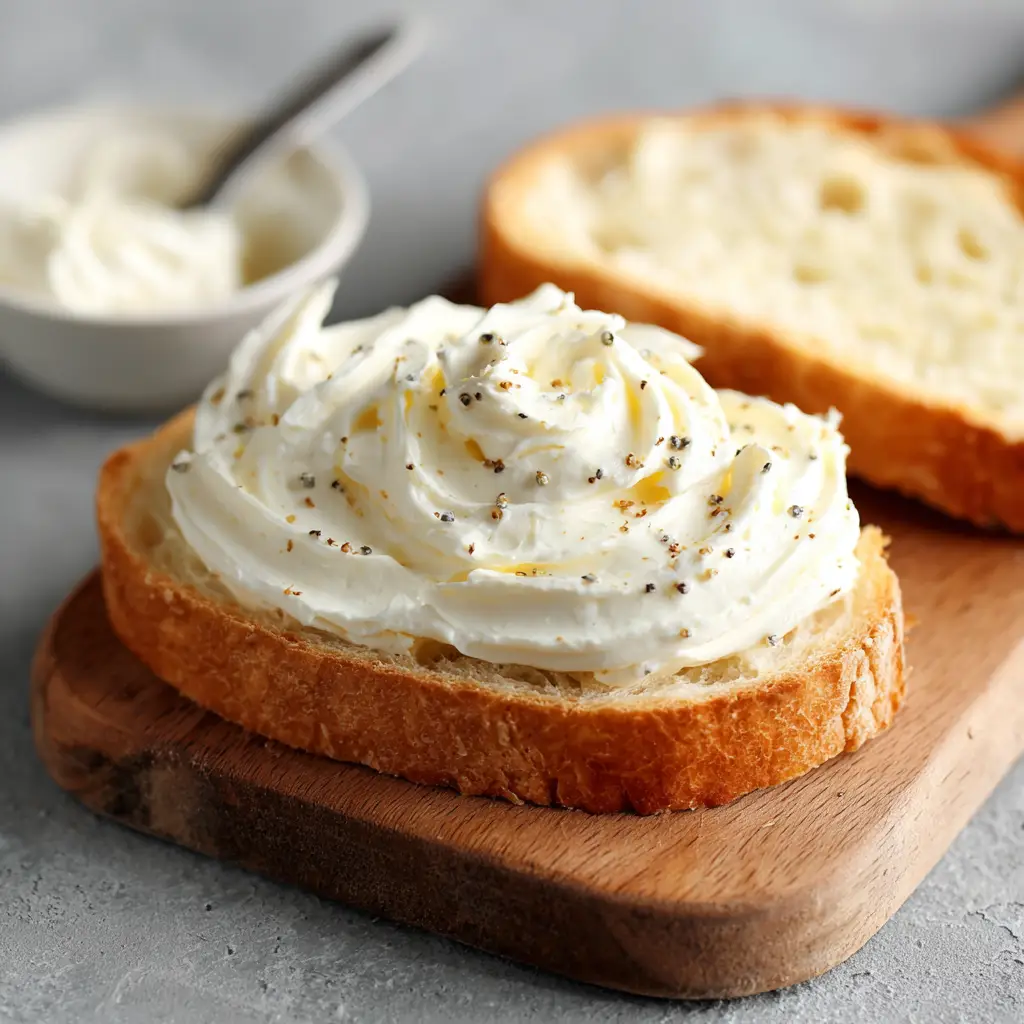Cream Cheese Recipe: Easy Homemade Cream Cheese in Simple Steps
Introduction
Cream cheese has earned a beloved spot in kitchens worldwide. Its smooth texture and mild tangy flavor make it incredibly versatile, whether spread on a bagel, folded into desserts, or used as a base for dips and frostings. Making cream cheese at home is surprisingly simple and rewarding, offering a fresh alternative to store-bought versions that often contain preservatives and additives. Homemade cream cheese allows for control over ingredients and customization to suit personal tastes, all while enjoying a creamy, wholesome product.
Creating cream cheese from scratch invites a deeper connection to your food. The process, though straightforward, involves a few steps that transform simple dairy ingredients into a rich, velvety spread. Whether you prefer plain cream cheese or one infused with herbs and spices, mastering this recipe lays the groundwork for a host of culinary adventures. It also provides an opportunity to appreciate the natural flavors of quality milk and cream.
Homemade cream cheese shines brightest when fresh. Its texture and taste can elevate everything from breakfast staples to gourmet meals. This recipe guides you through crafting smooth and luscious cream cheese, highlighting essential techniques and offering tips to personalize the flavor. With a little patience and care, your kitchen will produce a creamy delight that enhances countless dishes.

Ingredients Needed
| Ingredient | Quantity | Calories per Serving (approximate) |
|---|---|---|
| Whole milk | 4 cups (1 liter) | 150 calories per cup |
| Heavy cream | 1 cup (240 ml) | 820 calories per cup |
| Lemon juice | 3 tablespoons | 4 calories per tablespoon |
| Salt | 1 teaspoon | 0 calories |
Step-by-Step Cooking Instructions
- Heat the Dairy
Pour the whole milk and heavy cream into a large saucepan. Slowly warm the mixture over medium heat, stirring occasionally to prevent scorching. Heat until it reaches about 185 degrees Fahrenheit or just before it starts to boil. This step prepares the milk and cream for curdling. - Add the Acid
Remove the saucepan from heat and stir in the lemon juice gradually. The acid causes the milk solids to separate from the whey, forming curds. Let the mixture sit undisturbed for about 10 to 15 minutes. You will notice the liquid turning clearer as curds form. - Strain the Curds
Line a fine mesh strainer or colander with a clean cheesecloth or muslin cloth. Carefully pour the curdled mixture into the cloth to strain out the whey. Allow it to drain for about an hour at room temperature. For firmer cream cheese, gather the cloth edges and gently squeeze out excess liquid.Try this creamy Cream Cheese Recipe perfect for your Cottage Cheese Snack, and don’t miss out on our delicious Casserole ideas for a complete meal. - Blend the Cheese
Transfer the drained curds to a bowl. Add the salt and blend with a hand mixer or food processor until smooth and creamy. This step creates the signature texture of cream cheese. Taste and adjust salt as needed. - Chill and Store
Spoon the cream cheese into an airtight container. Refrigerate for at least two hours to let the flavors meld and the texture firm up. Homemade cream cheese typically lasts about one week in the refrigerator.

Tips for Customizing the Recipe
Enhance your cream cheese by mixing in fresh herbs like chives, dill, or parsley for a savory spread. Garlic powder or finely minced garlic adds a flavorful kick that pairs beautifully with crackers or bagels. For a sweet twist, try stirring in honey, cinnamon, or finely chopped fruits such as strawberries or blueberries.
Experimenting with different types of milk can alter the richness and texture. Using organic or grass-fed dairy yields a creamier, more flavorful cheese. Adding yogurt to the mixture can introduce a tangier note, reminiscent of labneh.
If a firmer consistency is preferred, extend the draining time or refrigerate overnight wrapped tightly in cheesecloth. Conversely, for softer cream cheese suitable for spreading, reduce the draining time slightly. Each variation offers a unique culinary experience.

Nutritional Information
One serving size is typically about two tablespoons, which contains roughly 100 calories. The fat content is relatively high due to the cream and whole milk but offers beneficial fat-soluble vitamins such as A and D. Cream cheese provides moderate protein and is naturally low in carbohydrates, making it suitable for various dietary preferences. Homemade versions avoid added sugars and preservatives found in many commercial products, making it a healthier choice overall.
Serving Suggestions
Cream cheese is incredibly versatile in the kitchen. Spread it thickly on toasted bagels or warm bread for a simple breakfast or snack. Use it as a base for dips by blending with herbs, garlic, or roasted vegetables. It pairs beautifully with smoked salmon, fresh cucumbers, or ripe tomatoes.
In baking, cream cheese adds moisture and richness to cheesecakes, frostings, and pastries. Dollop it onto pancakes or waffles as a creamy alternative to butter. For savory dishes, incorporate it into mashed potatoes or creamy pasta sauces for a luscious texture.
Cream Cheese Recipe: Easy Homemade Cream Cheese in Simple Steps
Course: Blog8
servings10
minutes20
minutes120
kcalIngredients
4 cups whole milk
1 cup heavy cream
3 tablespoons lemon juice (freshly squeezed)
1 teaspoon salt
Directions
- Heat the milk and cream in a large saucepan over medium heat. Stir occasionally and warm until the mixture reaches about 185°F (just before boiling).
- Remove from heat and slowly add lemon juice while stirring gently. Let the mixture sit for 10 to 15 minutes to allow curds to form.
- Line a strainer with a cheesecloth or muslin and pour the curdled mixture through it. Let drain for about 1 hour at room temperature. For thicker cream cheese, gently squeeze out excess whey.
- Transfer curds to a bowl and add salt. Blend with a hand mixer or food processor until smooth and creamy.
- Refrigerate the cream cheese in an airtight container for at least 2 hours before serving.
Recipe Video
Notes
- Use fresh, high-quality whole milk and cream for the best flavor and texture.
Adjust salt to taste after blending.
For a flavored version, add herbs, garlic, or honey after blending.
Frequently Asked Questions (FAQs)
How long does homemade cream cheese last?
Homemade cream cheese should be consumed within one week when stored properly in the refrigerator in an airtight container.
Can I use low-fat milk instead of whole milk?
Whole milk and cream are recommended for optimal texture and flavor. Using low-fat milk may result in a less creamy and tangy cheese.
Is it possible to make cream cheese without lemon juice?
Yes, white vinegar or citric acid can substitute lemon juice, though lemon juice adds a subtle, fresh flavor that complements the cheese.
Can cream cheese be frozen?
Freezing cream cheese may alter its texture, making it crumbly. It is best enjoyed fresh, but frozen cream cheese can still be used in cooking or baking where texture is less critical.
Conclusion
Creating cream cheese at home brings a fresh and natural product to your table, free from preservatives and full of rich flavor. The process combines simple ingredients with straightforward steps that anyone can follow. This homemade delight transforms everyday meals and snacks into something special. By mastering this recipe, you gain not only a delicious ingredient but also the satisfaction of crafting a timeless staple from scratch.







